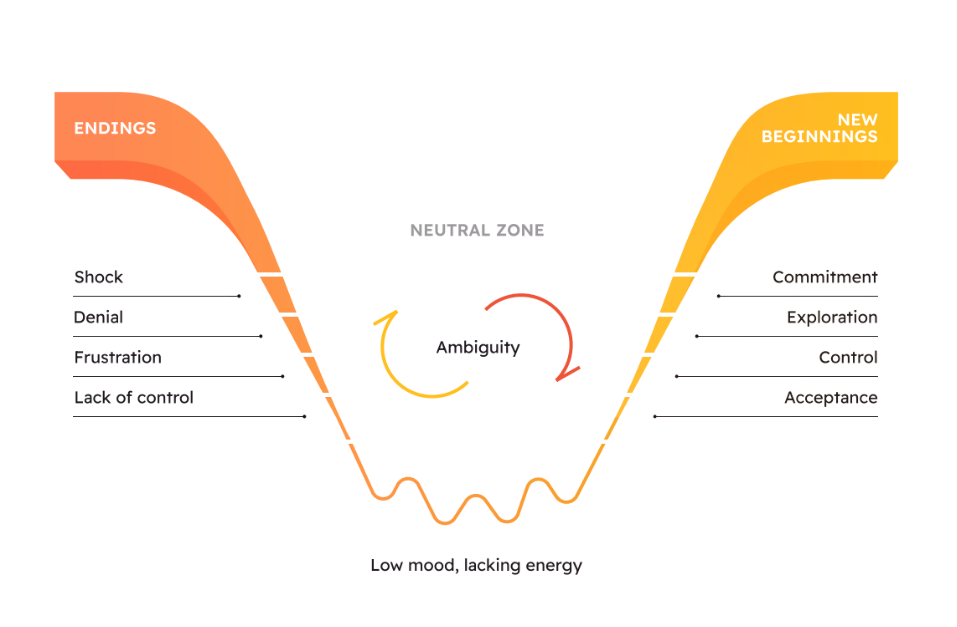The Change Curve: Understanding the impact of change
The Change Curve: Understanding the impact of change
5 minutes

Our brains are naturally programmed to perceive uncertainty and disruption as a risk or threat. In the workplace, when changes move people from the known to the unknown, it can be emotionally intense, causing people to react with confusion, fear, anxiety and frustration.
Change is inevitable; leadership transitions, restructurings, new products, and mergers and acquisitions bring constant change to the workforce.
As the world of work is rapidly changing with the adoption of ever-evolving technology, shifting economic conditions, hybrid work, and beyond, we need to equip ourselves and our people with the tools to effectively embrace change. No matter the size of these changes, leaders at all levels play a pivotal role in helping navigate through periods of transition.
To explore people’s journeys through change, we’ve combined psychiatrist Elisabeth KüblerRoss’ Change Curve with the Bridges’ Transition Model.
The Change Curve is one of many models that seeks to understand organisational change and personal transition. The consensus among them is to place your people at the heart of change and involve them in every step of the process.
The Change Curve identifies an individual’s emotional journey, typically ranging from denial, frustration, low mood, acceptance, and commitment.

Transition starts with Endings signifying a loss in a usual way of working or being. Initially, individuals may experience shock or denial when confronted with change. They might refuse to accept or acknowledge the situation. Following disbelief, there’s often resistance. People might feel anger, frustration, or anxiety as they grapple with the implications of the change.
As people begin letting go of this mindset it leads to the Neutral Zone. This the period between the end of the old way of doing things and the beginning of the new. During this phase, individuals may feel a sense of disorientation and uncertainty as they navigate the ambiguity of the transition.
Then comes New Beginnings marked by new understandings, attitudes, and values towards the change. This phase marks the point at which individuals start to embrace the change and actively engage in the process of adaptation. During this phase, people begin to see opportunities rather than just challenges, and they channel their energy towards creating a new reality.
People progress through change at different speeds. Some may oscillate between phases, while others move forward. What is most important, is to meet your people where they are.
It’s only natural to become focused on moving forward through the Change Curve. However, it’s important to give ourselves and others, the permission to feel all the emotions associated with change and work through it in our own time.
Rather, it helps individuals and leaders understand the impact of change, how people respond and transition, and the emotions associated with each stage.
Hellomonday